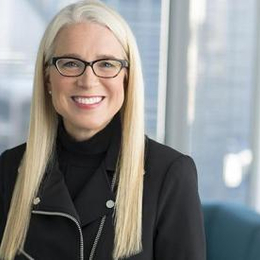The Invisible Woman
With the growing realization that flexible work arrangements — a shift in work hours, working remotely or job-sharing — are key to attracting, keeping and advancing talented women at all points in their careers, discussion around the relative importance of face time in the office vs. results is heating up.
Many managers are hanging on to outdated views about face time as a full measure of an employee’s value to an organization and are losing outstanding employees as a result.
Still, one type of face time is key to advancing a career — face time with senior leaders.
Employees who interact regularly with their company’s senior leaders are more likely to ask for and receive promotions, according to McKinsey & Co.’s Women in the Workplace 2018 report. They’re also more likely to stay with their companies and aim to be leaders themselves.
CAN YOU HEAR ME NOW?
Makes sense. The problem is 33 percent of the women surveyed for Women in the Workplace said they’d never had a significant discussion with a senior leader about their work (compared to 27 percent of men surveyed). For some women of color, access is even more limited. Forty percent of black women reported never having a substantive work-related conversation with a senior leader.
Women are also less likely than men to socialize with their managers or other executives outside the workplace. Nearly half of women surveyed said they have never had an informal interaction with a senior leader, compared to 40 percent of men. Again, many women of color have even less face time with the men and women who create opportunities and open doors. Fifty-four percent of Latinas and nearly 60 percent of black women said they’ve never had an informal interaction with a senior leader.
At all points in their careers, women have fewer opportunities to demonstrate their skills, show off their work results or make strategic connections with their company’s career-opportunity gatekeepers. The result: When managers are considering candidates for stretch assignments, leadership development or promotions, they’re more likely to choose a man because it’s more likely a man is on their radar. A known employee always has an advantage over an unknown employee.
SEEKING SPONSORS
One way to level the playing field is to encourage senior leaders to sponsor women. A full 70 percent of the 70 organizations named 2019 Top Companies for Executive Women by the National Association for Female Executives have sponsorship initiatives.
Companies can support more sponsorship with these five actions put forth by Working Mother magazine:
- Expose senior leaders to high-potential talents from different groups, especially underrepresented populations;
- Link sponsorship to senior executives’ goals, performance reviews and compensation;
- Have clear objectives for sponsorship and communicate to everyone involved;
- Use employee resource groups to find high-potential women worthy of sponsorship; and
- Measure promotion and retention rates of those who are sponsored vs. people not sponsored in similar roles.
The NEW Blueprint for Gender Equality, which NEW is sharing now with our corporate partners, lays out best practices for companies that are working to create a gender-diverse and inclusive workplace. While developing this action plan, we found a number of forward-thinking companies that are disrupting the status quo with other practices that promote women’s visibility with senior leaders.
One of our corporate partners, for example, is piloting a program that pairs individuals who are ready to move up to the next role with members of its leadership team for development discussions. “It’s very straightforward,” the company’s vice president of human resources told us. “Women who may not have a sponsor already are getting that attention.”
J.P. Morgan’s Women on the Move initiative’s 30-5-1 campaign brings women and men together for 36 minutes each week to support women’s growth and development. Participants commit to spending 30 minutes having coffee with a talented up-and-coming woman, five minutes congratulating a female colleague on a win or success, and one minute talking up the woman who had that win with other colleagues.
“At JPMorgan Chase, we have a truly amazing group of female colleagues,” said J.P. Morgan’s Asset and Wealth Management CEO Mary Erdoes, co-sponsor of Women on the Move. “It’s up to each one of us — men and women alike — to ensure they have the support mechanisms they need to succeed, and this campaign is one of the most important ways we can do that.”
Formal, structured development programs that support face time with senior leaders benefit talented women and men, but especially those who may otherwise be unseen — or overlooked.
Editor’s note: The opinions expressed in this column are the author’s and do not necessarily reflect the views of Convenience Store News.



